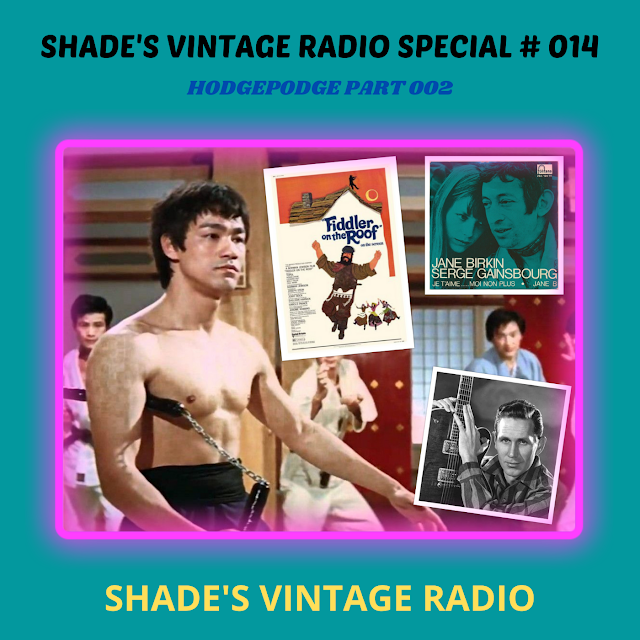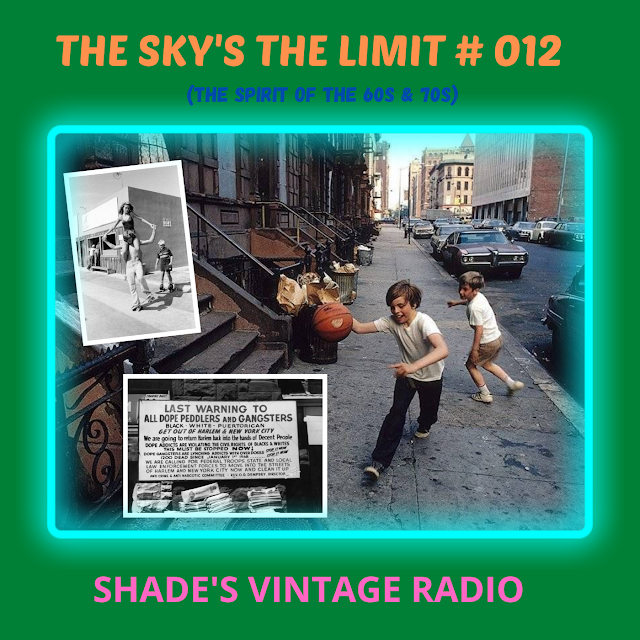domingo, 29 de mayo de 2022
sábado, 28 de mayo de 2022
SATURDAY NIGHT AT THE MOVIES 012: LADIES OF THE CHORUS (1948)
"It was really dreadful." this was Marilyn Monroe's confession to French journalist Georges Belmont in 1960 of her first starring film, "Ladies Of The Chorus", released twelve years earlier. "I was supposed to be the daughter of a burlesque dancer some guy from Boston falls in love with. It was a terrible story and terribly, badly photographed; everything was awful about it. So, Columbia dropped me. But you learn from everything."
Monroe's debut as a musical comedy performer in "Ladies Of The Chorus" was arguably far from dreadful. In the succinct, B-movie with a ten-day production schedule, she portrayed Peggy Martin, a burlesque chorus dancer with an overprotective mother, May (Adele Jergens), another dancer in the troupe. When headliner Bubbles LaRue quits, the stage manager asks May to take her place, but she concedes to her daughter. Peggy's performance is classy, and the audience is smitten by her. Randy Carroll (Rand Brooks), a wealthy young man in the audience, is especially smitten and anonymously sends Peggy orchids by the dozens. When a florist, unaware of Peggy's identity, disapproves of Randy sending orchids to a burlesque star, Peggy plans along with a sneer. Peggy and Randy begin dating, and Randy quickly proposes.
Protective May approves of Randy but fears his wealthy mother will disapprove of Peggy based on her career as a burlesque star. In the past, when May was a young chorus girl, she married a wealthy young man from the audience who had fallen in love with her. After Peggy's birth, the marriage was annulled because May's mother-in-law rejected her. Hoping to spare her daughter from the pain she experienced in the past, may urges Randy to inform his mother of Peggy's profession before introducing them. Randy cannot bring himself to do this, and his mother, Mrs. Carroll (Nana Bryant), hosts an engagement party and invites Peggy and May.
Entertainers invited to the event recognize the mother and daughter, and May is forced to disclose their profession to the guests, who all pass judgment. Mrs. Carroll wholeheartedly accepts Peggy and performs a song. She also delivers a bombshell by informing her guests that she, too, had been a chorus girl, but this is a tale told to soften her guests. In the end, Peggy and Randy proceed with marriage plans, and May settles down with her longtime boyfriend, the stage manager of her show.
"Every Baby Needs A Da-Da-Daddy" is Monroe's first significant performance in a musical and strangely predictive. In a stylized set depicting a jewelry store with a neon sign in the shape of a diamond ring. Monroe's long, sparkling gown with a slit up its side foreshadows her costume in "Gentlemen Prefer Blondes" (1953). The song's reference to Tiffanys prophesized her iconic number, "Diamnods Are A Girl's Best Friend," in the same film. With graceful moves and silky hair styled in the coiffure of Columbia's reigning queen, Rita Hayworth, Monroe is reminiscent of the latter's "Put The Blame On Mame" number from the studio's "Gilda" (1946). However, Monroe's performance is far more virtuous. The studio clearly marketed her as a somewhat wholesome version of Hayworth - and a far cry from the siren image 20th Century Fox would later invent.
Columbia released "Ladies Of The Chorus" on October 22, 1948, and Monroe received her first reviews. All were positive. "One of the bright spots is Miss Monroe's singing," proclaimed Motion Picture Herald. "She is pretty and, with her pleasing voice and style, shows promise." Variety announced: "Enough musical numbers are inserted, topped with nifty warbling of Marilyn Monroe. Miss Monroe presents a nice personality in her portrayal of the burly singer."
The Main Feature:
Note: Password for all files: Shade'sVintageRadio
viernes, 27 de mayo de 2022
SHADE'S VINTAGE RADIO SPECIAL 025: HISPANIC COVERED FLAVOURS Volume 001
02 – EVERYBODY LOVES A LOVER (Doris Day) (1958)
03 – TENGO NOVIO (Leda Moreno) (1962)
04 – PRETTY BLUE EYES (Steve Lawrence) (1959)
05 – BONITOS OJOS AZULES (Los Teen Agers) (1962)
06 – NEXT DOOR TO AN ANGEL (Neil Sedaka) (1962)
07 – MI VECINITA (Neil Sedaka) (1964)
08 – STAND BY ME (Ben E. King) (1961)
09 – VEN A MI (Los Hitters) (1965)
10 – SWEETS FOR MY SWEET (The Drifters) (1961)
11 – SWEETS FOR MY SWEET (The Searchers) (1963)
12 – DULCES A MI NENA (Los Loud Jets)
13 – MY BOY LOLLIPOP (Millie Small) (1964)
14 – MI NOVIO ESQUIMAL (Pyly Gaos) (1966)
15 – EVERY DAY (Buddy Holly) (1957)
16 – DIARIAMENTE (Leda Moreno)
17 – I WANT TO BE FREE (Elvis Presley) (1957)
18 – QUIERO SER LIBRE (Enrique Guzman)
19 – ITSY BITSY TEENIE WEENIE YELLOW POLKA DOT
BIKINI (Brian Hyland) (1960)
20 – BIKINI AMARILLO (Manolo Muñoz) (1960)
21 – DREAM LOVER (Bobby Darin) (1959)
22 – AMANTE SOÑADOR (César Costa) (1972)
23 – C’MON EVERYBODY (Eddie Cochran) (1958)
24 – AVIÉNTENSE TODOS (Los Locos Del Ritmo) (1962)
25 – BYE, BYE LOVE (Everly Brothers) (1957)
26 – ADIÓS, ADIÓS AMOR (Dúo Dinámico) (1993)
27 – JUANITA BANANA (The Peels) (1966)
28 – JUANITA LA PLATANERA (Los Yaki) (1966)
29 – CHICA YE-YÉ (Concha Velasco) (1965)
30 – CHICA YE-YÉ (Gelu) (1965)
31 – CHICO YE-YÉ (Los Botines) (1965)
32 – THE GIRL OF YE YE (Zoe And The Stormies) (1966)
33 – LA OLA NUEVE (Los Jets)
miércoles, 25 de mayo de 2022
domingo, 22 de mayo de 2022
sábado, 21 de mayo de 2022
SATURDAY NIGHT AT THE MOVIES 011: THE BEATLES AND INDIA (2021)
Some of the most emotive sequences in the documentary contrast footage of the Four in Rishikesh with the Maharishi and his followers with images of those same locations deteriorated and abandoned today. One gets a sense of the death of a dream from them, the failure of these supremely successful young men to find something of meaning beyond the wealth and fame that encircled them. The film is also filled with first-person accounts from people who were there about the events at the ashram and their up-close interactions with some of the most famous people alive at the time.
viernes, 20 de mayo de 2022
miércoles, 18 de mayo de 2022
domingo, 15 de mayo de 2022
sábado, 14 de mayo de 2022
SATURDAY NIGHT AT THE MOVIES 010: YELLOW ROSE (2020)
Last week we had the opportunity of watching "Viva Las Vegas", well this week you have all the musical videos, pertaining the film, of both Elvis Presley and Ann-Margret in one file. Somehow, a much easier and, definitely, more enjoyable way to revisit the film.
viernes, 13 de mayo de 2022
miércoles, 11 de mayo de 2022
domingo, 8 de mayo de 2022
ANYTHING, ANYWHERE, ANYTIME 034
AAA034 (pw: Shade'sVintageRadio)
01 - LET’S GO (The Routers) (1962)
02 – OH YEAH, I’M IN LOVE (Ricky Nelson) (1961)
03 – TICK TOCK (The Boppers) (1979)
04 – ALL I NEED IS YOU (Neil Sedaka) (1959)
05 – SOMEONE TO LOVE ME (Brenda Lee) (1961)
06 – XEROX 914 (Commercial Jingle)
07 – MOLLY (Desperados) (1986)
08 – REMEMBER YOU’RE MINE (Skeets McDonald) (1954)
09 – POSSIBILITY (The Crowns) (1964)
10 – SWEDISH GIRL (Freddy Velas & The Silvertones)
(2018)
11 – LEAVE HER FOR ME (The Jades with Lou Reed) (1958)
12 – KATHLEEN (Wally Lewis) (1958)
13 – I’VE GOT A SECRET (George Hamilton IV) (1957)
14 – I’D RATHER DIE YOUNG (Johnny Cash) (1958)
15 – GOTTA LOT OF RHYTHM IN MY SOUL (Patsy Cline) (1959)
16
– YO SÍ
COMO PATATAS (Commercial Jingle)
17 – SABOR A 50 (Tennessee) (1987)
18 – TIME AFTER TIME (The Consorts) (1960)
19 – CARL PERKINS ON ELVIS (Carl Dialogue) (1989)
20 – BABY LET’S PLAY HOUSE (Live Louisiana Hayride) (Elvis Presley) (1955)
21 – RIP IT UP (Los Lobos) (1987)
22 – WHO WOULDN’T LOVE YOU (Webb Pierce) (1958)
23 – WHAT A SURPRISE (Johnny Maestro & The Crests) (1961)
24 – WHO’S THAT KNOCKING (The Genies) (1959)
25 – WHO’S THAT KNOCKING (The Darts) (1978)
26 – TINY CLOUD (The Roomates) (2012)
27 – SOUL BOSSA NOVA (Quincy Jones & His Orchestra) (1962)




































